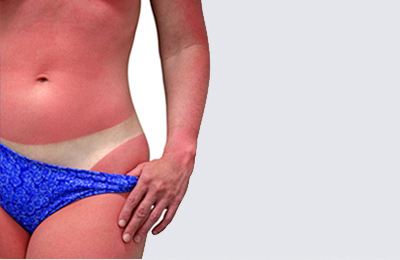The Hazards of Indoor Tanning
Risks of Indoor Tanning
• The United States Department of Health 8, Human Services and the World Health Organization's (WHO) International Agency for Research on Cancer panel have declared ultraviolet (UV) radiation from the sun and artificial sources, such as tanning beds and sun lamps, as a known carcinogen (cancer-causing substance)... • Indoor tanning equipment, which includes all artificial light sources including beds, lamps, bulbs, booths, etc., emits UVA and UVB radiation. The amount of radiation produced during indoor tanning is similar to the sun and in some cases may be stronger.. • Evidence from several studies has shown that exposure to UV radiation from indoor tanning devices is associated with an increased risk of melanoma and non-melanoma skin cancer such as squamous cell carcinoma and basal cell carcinoma... • Studies have demonstrated that exposure to UV radiation during indoor tanning damages the DNA in the skin cells. Also excessive exposure to UV radiation during indoor tanning can lead to premature skin aging, immune suppression, and eye damage, including cataracts and ocular melanoma.. • In addition to the above mentioned risks, frequent, intentional exposure to ultraviolet (UV) light may lead to an addiction to tanning.. • In a survey of adolescent tanning bed users, it was found that approximately 58% had bums due to frequent exposure to indoor tanning beds/lamps.. • The FDA estimates that there are approximately 3. hospital emergency room cases a year due to indoor tanning bed and lamp exposure.. Legislation/Regulation • As of early 2014, seven states (Washington, Illinois, Nevada, Texas. Oregon, Vermont and Califomia) have banned indoor tanning for minors under the age of 18. • Currently, indoor tanning devices are classified as class I medical devices by the Mk On May 6, 2013. the FDA issued a proposed order that recommends reclassification of indoor tanning devices to a Class II device. The proposed order also included a strong recommendation against the use of tanning beds by minors under 18. Academy Position Statement on Indoor Tanning • The American Academy of Dermatology Association (AADA) opposes indoor tanning and supports a ban on the production and sale of indoor tanning equipment for non.medical purposes. • The American Academy of Dermatology supports the World Health Organization recommendation that minors should not use indoor tanning equipment because indoor tanning devices emit UVA and UVB radiation and overexposure to UV radiation can lead to the development of skin cancer. • Unless and until the FDA bans the sale and use of indoor tanning equipment for non.medical purposes, the Academy supports restrictions for indoor tanning facilities, including: • No person or faciliry should advertise the use of any UVA or UVB tanning device using wording such as -safe,. "safe tanning," , harmful rays," "no adverse effect" or similar wording or concepts. |



